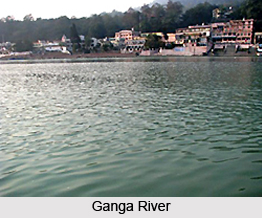 Geography of Rae Bareli District includes fairly compact tract of gently undulating land. The highest points of the district are the crowns of the watersheds of the different drainage channel which serve to divide the district into five main physical units namely Ganga Khadar, Ganga upland, southern clay tract, central tract or Sai upland and northern clay tract. Geography of Rae Bareli District also comprises river systems and several water resources. The district is drained by Ganga River, Sai River and their tributaries although some of them join the main stream after passing the confines of the district.
Geography of Rae Bareli District includes fairly compact tract of gently undulating land. The highest points of the district are the crowns of the watersheds of the different drainage channel which serve to divide the district into five main physical units namely Ganga Khadar, Ganga upland, southern clay tract, central tract or Sai upland and northern clay tract. Geography of Rae Bareli District also comprises river systems and several water resources. The district is drained by Ganga River, Sai River and their tributaries although some of them join the main stream after passing the confines of the district.
Rae Bareli District forms a part of Indo-Gangetic plain according to geological chronology and reveal ordinary Gangetic alluvium. The district being a part of the alluvial plain conforms to the same geological sequence as the plain itself. The only mineral of importance is Kanker. The district is also noted for its deposits of brick earth. As this district lies in the vast Gangetic plain of north India at an elevation of around 100 to 120 metres, sloping gently to south east. Relief from the summer heat arrives with the monsoon usually in the second half of June, through the weather may often remain humid. The winter sets in November and last up to February generally. The climate of Rae Bareli District is almost dry. Annual rainfall is about 900 to1000 mm which is mainly during the period of July to September.
Ganga River, which is the only main river in the district touches it in the extreme west of Pargana Sareni in tehsil Dalmau and, forming the southern boundary of the district, runs south east as far as village Barua. The main tributaries of River Ganga are Loni (this large stream which rises in Unnao District and enters Rae Bareli in the west) and Chob (this stream rises on the southern side of the district). Mathna Nadi is another tributary of GANGA River in the district. This is a small stream which rises in the swamps of Pargana Dalmau. It runs southward in a twisted course for several kms to the west of Dalmau. Sai River is another river traversing through Rae Bareli District. The total course of the river in the district is near about 100 kms. The major tributaries of Sai River are Kathwara Naiya, Nasirabad Naiya, Basaha, Soh and Semrauta Naiya.
Groves in Rae Bareli District consist mostly of mango and mahua trees. Flora and fauna have greatly decreased in number and variety in the district during the past century. However, different varieties of snakes and other reptiles are found everywhere in the district especially in the rural areas.



















